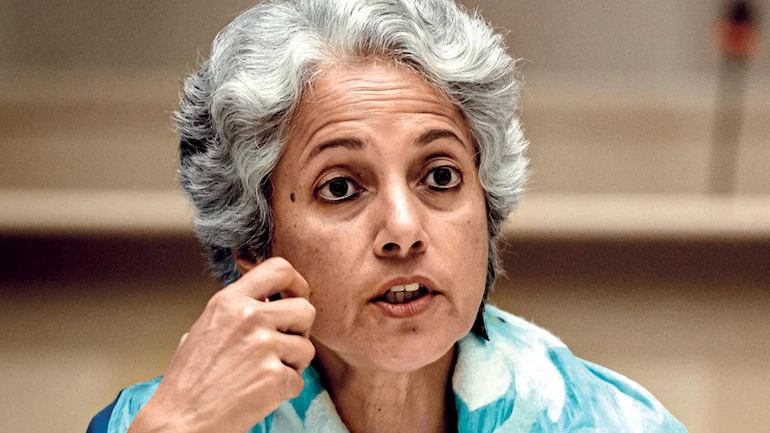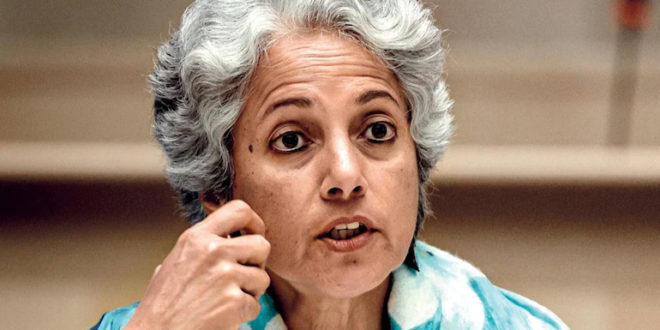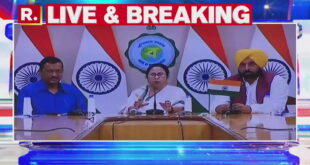“By the end of 2022, we would be in the position
where we have achieved vaccine coverage, say

70%, and then countries can get back to normal,”
said WHO Chief Scientist Dr Soumya Swaminathan.”
COVID-19 in India may be entering a stage of endemicity when there is a low to moderate amount of transmission,according to World Health Organization Chief Scientist Dr Soumya Swaminathan.
When a community learns to live with a virus, it is said to be in the endemic stage. It’s a far cry from the epidemic stage, when the virus has taken over a population.
Swaminathan expressed confidence that the WHO’s technical group will approve Covaxin as one of its licenced vaccines, adding that this may happen by mid-September.
Swaminathan added in an interview that given the vastness of India and the heterogeneity of population and immunity status in different areas of the country, the situation might “very very likely” continue with ups and downs in different sections of the country.
“We may be entering a stage of endemicity where low-level or moderate-level transmission is occurring, but we are not witnessing the kinds of exponential increases and peaks that we witnessed a few months ago,” Swaminathan said.
“As far as India is concerned, that appears to be the case, and given the size of the country and the heterogeneity of population and immunity status in different parts of the country in different pockets, it is very possible that the situation will continue in this manner, with ups and downs in different parts of the country, particularly where there are more susceptible populations, so those groups who are more vulnerable.”
She expects that by the end of 2022, “we will have reached the point where we have achieved vaccine coverage, say 70%, and then countries will be able to return to normal.”
Swaminathan suggested parents should not be concerned about the prevalence of COVID among children. “While it is possible for children to become infected and transmit, we can learn from the serosurvey and what we learned from other countries that while it is possible for children to become infected and transmit, children, on the whole, have very mild illnesses most of the time, and only a small percentage of them get sick and develop inflammatory complications, and only a few will die, but far fewer than the adult population… But it’s a good idea to plan ahead… Preparing hospitals for paediatric admissions, paediatric intensive care may benefit our health-care system in a variety of ways for various ailments that children may face, but we shouldn’t be concerned about thousands of children crammed into ICUs “she remarked.
On the use of drugs like Remdesivir, HCQ, or Ivermectin for treatment, she stated that there is currently no evidence that HCQ or Ivermectin play any role in reducing mortality or morbidity in people infected with the virus or actually preventing infection, so there are no grounds on which recommendations can be made in the use of either of these drugs for treatment or prevention.
She stated that she hopes to make a decision on Covaxin clearance by mid-September.
“The first data set was submitted by Bharat Biotech in the third week of July, and then an updated data set was submitted in the middle of August. The committee has sent some questions back to the corporation, which they must be in the process of answering right now. I believe the technical advisory board that will make the final decision will meet in the first ten days of September, so we’re hopeful it will happen soon after that “she stated
She claimed that no one had a “crystal ball” and that predicting the third wave is difficult. “It will be hard to anticipate when and where the third wave will strike, or even if one will strike at all. You can, however, make reasonable guesses about some of the elements that influence transmission “she stated
She explained that there are scientific, moral, and ethical reasons for not rushing into booster doses. “…therefore it would be in the self-interest of countries with excess doses now to send those doses out through Covax to countries who severely need them,” she explained.
So by the middle of September, I’m thinking, and the reason it took so long was due to back-and-forth and the need for more data from the corporation, which is standard procedure. People believe Covaxin takes longer than other vaccines, but this is not the case… “Each organisation that requested for an EUL (Emergency Use Listing) took 4 to 6 to 8 weeks to gather all of the necessary data,” she said.
She claimed that no one had a “crystal ball” and that predicting the third wave is difficult. “It will be hard to anticipate when and where the third wave will strike, or even if one will strike at all. You can, however, make reasonable guesses about some of the elements that influence transmission “she stated.
(This is the whole statement of Who chief scientist , Doctor. Soumya Saminathan on covid-19 endemic phase )
By: Divyanshi Jaiswal
 India One News
India One News





